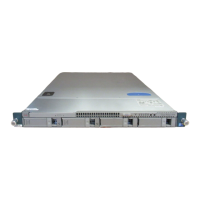CHAPTER
11-1
Cisco Nexus 1000V Troubleshooting Guide, Release 5.2(1)SV3(1.1)
OL-31593-01
11
Port Channels and Trunking
This chapter describes how to troubleshoot port channels and trunking and includes the following sections:.
• Information About Port Channels and Trunking, page 11-1
• Initial Troubleshooting Checklist, page 11-2
• Troubleshooting Asymmetric Port Channels, page 11-3
• Cannot Create Port Channel, page 11-4
• Newly Added Interface Does Not Come Online In a Port Channel, page 11-4
• VLAN Traffic Does Not Traverse Trunk, page 11-5
Information About Port Channels and Trunking
This section includes the following topics:
• Port Channel Overview, page 11-1
• Trunking Overview, page 11-2
Port Channel Overview
Port channels aggregate multiple physical interfaces into one logical interface to provide higher bandwidth,
load balancing, and link redundancy.
A port channel performs the following functions:
• Increases the aggregate bandwidth on a link by distributing traffic among all functional links in the
channel.
• Load balances across multiple links and maintains optimum bandwidth usage.
• Provides high availability. If one link fails, traffic previously carried on this link is switched to the
remaining links. If a link goes down in a port channel, the upper protocol is not aware of it. To the
upper protocol, the link is still there, although the bandwidth is diminished. The MAC address tables
are not affected by link failures.

